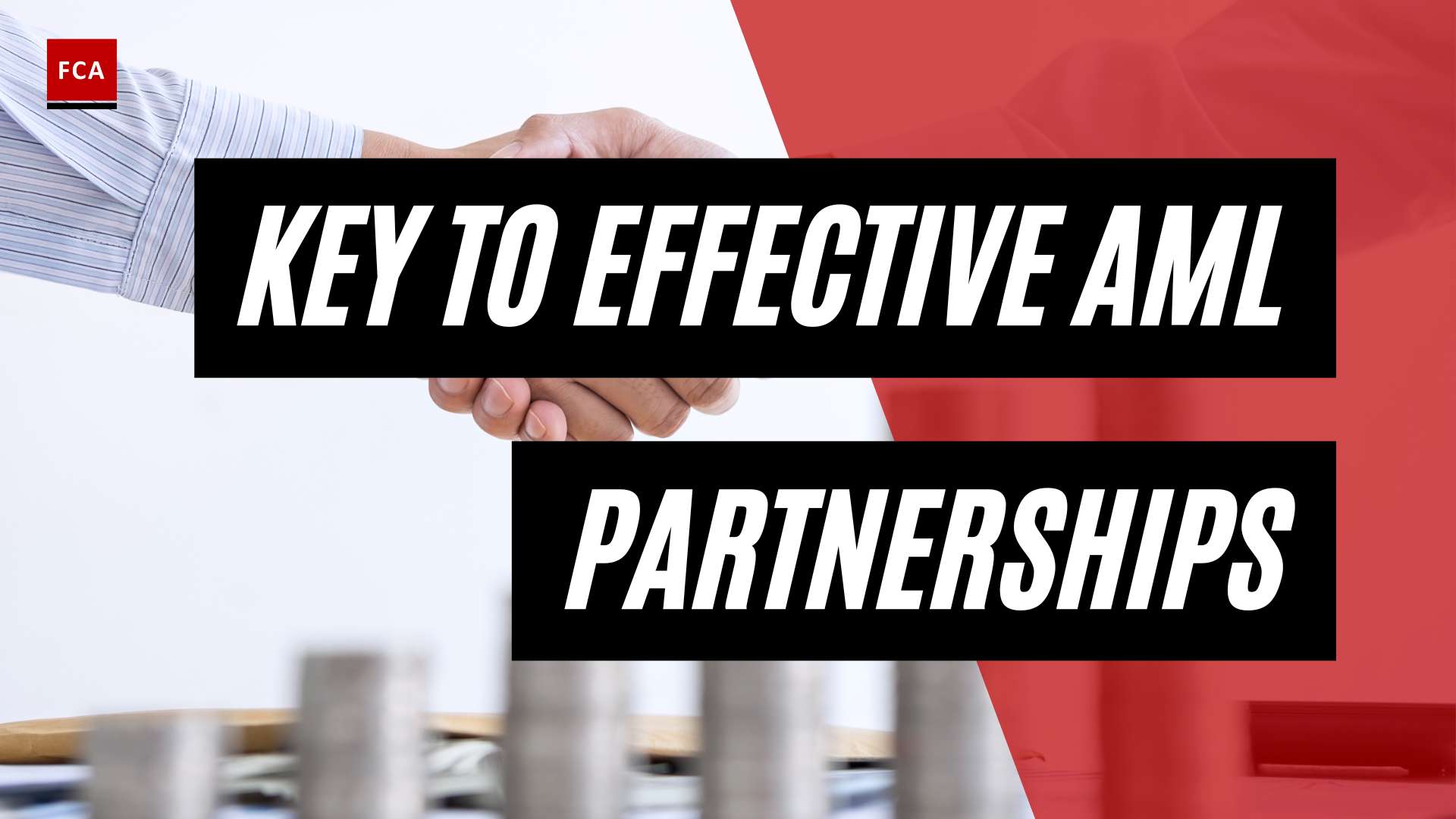EU Directives on AML
The European Union (EU) has implemented a series of directives to combat money laundering and terrorist financing within its member states. These directives have evolved over time to address emerging risks and strengthen the EU’s anti-money laundering (AML) framework. Understanding the evolution and key provisions of these directives is essential for compliance professionals and individuals working in the field of AML.
Evolution of EU AML Directives
The first anti-money laundering Directive in the EU was adopted in 1990, aiming to prevent the misuse of the financial system for money laundering. Since then, the EU has continuously updated and expanded its AML legislation to keep pace with evolving threats and international standards. The legislative framework has undergone several revisions to enhance the effectiveness of AML measures and ensure consistency across member states.
Key Provisions of AML Directives
The EU’s AML directives establish a comprehensive framework to prevent money laundering and terrorist financing activities. These directives lay down obligations for financial institutions and other entities designated as “obliged entities.” Some key provisions of the EU AML directives include:
-
Customer Due Diligence (CDD): Obliged entities are required to apply CDD measures to identify and verify the identity of their customers. This involves obtaining information such as identification documents, beneficial ownership details, and risk assessments.
-
Transaction Monitoring: Obliged entities must monitor customer transactions to detect and report any suspicious activities that may indicate money laundering or terrorist financing. This includes identifying transactions that are unusual in their nature, size, or pattern.
-
Reporting Obligations: Obliged entities are obligated to report suspicious transactions to the relevant financial intelligence units (FIUs) in their respective member states. Timely and accurate reporting plays a crucial role in combating money laundering and providing intelligence for law enforcement investigations.
-
Risk-Based Approach: The EU directives emphasize the importance of adopting a risk-based approach to AML compliance. Obliged entities are expected to assess the money laundering and terrorist financing risks they face and implement appropriate measures to mitigate those risks effectively.
For a comprehensive understanding of the specific requirements and provisions of each EU AML directive, refer to our detailed articles on the EU AML legislation, EU AML framework, and EU AML policy.
The EU’s commitment to countering money laundering and terrorist financing is evident from the continuous updates and enhancements to its AML directives. Compliance professionals and individuals involved in AML activities must stay informed about the latest AML directives and their implications to ensure effective AML compliance within their organizations.
AML Compliance Framework in the EU
To combat money laundering and terrorist financing, the European Union (EU) has established a comprehensive AML compliance framework that obliges entities to adhere to specific regulations and reporting obligations. This framework aims to enhance the integrity of the financial system and protect against illicit activities. Two key components of the AML compliance framework in the EU are the obliged entities and reporting obligations, as well as the risk-based approach to AML compliance.
Obliged Entities and Reporting Obligations
The EU AML framework designates certain entities as “obliged entities” that are required to implement robust AML measures and report suspicious activities. These obliged entities include banks, financial institutions, payment service providers, auditors, accountants, tax advisors, and more. The specific list of obliged entities may vary across EU member states, but the goal is to cover a wide range of sectors vulnerable to money laundering and terrorist financing.
Obliged entities have reporting obligations to financial intelligence units (FIUs), which are responsible for receiving, analyzing, and disseminating information related to suspicious transactions. They play a crucial role in identifying potential money laundering activities and facilitating cooperation among national authorities and international counterparts.
It’s important for obliged entities to have effective internal control systems in place to detect and report suspicious activities. These systems should include customer due diligence procedures, record-keeping requirements, and staff training programs. By fulfilling their reporting obligations, obliged entities contribute to the overall efforts in combating money laundering and terrorist financing within the EU.
Risk-Based Approach to AML Compliance
The EU AML compliance framework adopts a risk-based approach, acknowledging that not all customers and transactions pose the same level of risk. This approach requires obliged entities to assess and understand the risks associated with their business activities and customer relationships. By identifying and categorizing risk factors, obliged entities can allocate resources more effectively and prioritize their AML efforts.
The risk-based approach involves conducting risk assessments, implementing appropriate customer due diligence measures, and applying enhanced due diligence for higher-risk customers and transactions. It also emphasizes the importance of ongoing monitoring and regular reviews of customer relationships to detect any suspicious activities.
EU member states are encouraged to provide guidance and support to obliged entities in implementing the risk-based approach. This includes sharing best practices, conducting risk assessments, and offering training programs to enhance their understanding of AML risks.
By adopting a risk-based approach, obliged entities can tailor their AML measures to address the specific risks they face, ensuring a more efficient and targeted response to potential money laundering and terrorist financing activities.
Understanding the obligations and requirements of the AML compliance framework in the EU is essential for professionals working in compliance, risk management, anti-money laundering, and anti-financial crime. By staying informed and adhering to these regulations, organizations and individuals contribute to a safer and more secure financial environment within the European Union.
EU AML Directives and Compliance Requirements
The European Union has implemented a series of Anti-Money Laundering (AML) directives to combat money laundering and terrorist financing within its member states. These directives provide the framework for AML compliance and set out the obligations for financial institutions and other entities. Let’s explore the key directives and their compliance requirements.
First Anti-Money Laundering Directive (1AMLD)
The First Anti-Money Laundering Directive (1AMLD) was adopted in 1990 as the initial step in the EU’s efforts to prevent money laundering. It imposed obligations on obliged entities, such as financial institutions, to apply customer due diligence measures, monitor transactions, and report suspicious activities. The directive aimed to safeguard the integrity of the financial system and prevent the misuse of funds for illicit purposes.
Second Anti-Money Laundering Directive (2AMLD)
Following the 9/11 terrorist attacks, the Second Anti-Money Laundering Directive (2AMLD) was introduced in December 2001. This directive expanded the scope of predicate offenses subject to money laundering regulations and imposed stricter requirements on additional obliged entities, including notaries, auditors, and tax advisors. The directive aimed to strengthen the EU’s AML framework and enhance the detection and prevention of money laundering activities.
Third Anti-Money Laundering Directive (3AMLD)
The Third Anti-Money Laundering Directive (3AMLD) came into effect in 2005 and introduced the risk-based approach (RBA) to AML compliance. It provided flexibility in applying customer due diligence (CDD) processes based on various factors, along with measures such as Simplified Due Diligence (SDD) and Enhanced Due Diligence (EDD). The directive aimed to enhance the effectiveness of AML measures while taking into account the different levels of risk associated with different types of customers and transactions.
Fourth Anti-Money Laundering Directive (4AMLD)
Approved in 2015, the Fourth Anti-Money Laundering Directive (4AMLD) aligned with the Financial Action Task Force (FATF) recommendations and introduced significant changes to the EU’s AML framework. The directive expanded the risk-based approach to customer due diligence, included sectors such as gambling-based firms in AML obligations, and emphasized transparency in combating corruption, tax evasion, and bribery. It also introduced the requirement for Ultimate Beneficial Owners (UBOs) to be listed in national registries for improved transparency within corporate structures.
Fifth Anti-Money Laundering Directive (5AMLD)
The Fifth Anti-Money Laundering Directive (5AMLD), adopted in 2018, further strengthened the EU’s AML regulations. It expanded the scope to include virtual currencies, prepaid cards, and art dealers, bringing them under the AML obligations. The directive introduced stricter rules on beneficial ownership, enhanced cooperation between Financial Intelligence Units (FIUs), and increased transparency in the real estate sector. These measures aimed to address emerging risks associated with money laundering and terrorist financing.
Sixth Anti-Money Laundering Directive (6AMLD)
The European Union’s Sixth Anti-Money Laundering Directive (6AMLD), adopted in 2018, extends the scope and coverage of AML compliance even further. It encompasses a wider range of crimes, including cybercrime, tax crimes, environmental crime, and intellectual property crime. The directive enhances transparency and provides law enforcement authorities with more effective tools to investigate and prosecute money laundering offenses. It reinforces the EU’s commitment to combatting money laundering and protecting the integrity of the financial system.
Understanding the EU AML directives and their compliance requirements is essential for organizations operating within the EU. Compliance with these directives helps to safeguard the financial system, prevent money laundering, and maintain the integrity of the EU’s financial markets.
Recent Developments in EU AML Regulations
As part of the ongoing efforts to combat money laundering and terrorist financing, the European Union (EU) has implemented various measures and introduced new regulations to strengthen the AML (Anti-Money Laundering) framework. In this section, we will explore three significant recent developments in EU AML regulations: the EU Action Plan on AML and CFT, the role of the Anti-Money Laundering Authority (AMLA), and the proposed Regulation on the Traceability of Transfers of Funds (TFR).
EU Action Plan on AML and CFT
In May 2020, the European Commission adopted the EU Action Plan on AML and CFT (Countering the Financing of Terrorism). This comprehensive plan aims to enhance the effectiveness of the EU AML regime and strengthen the EU’s resilience against money laundering and terrorist financing activities. The action plan encompasses several key objectives, including:
- Establishing a single EU rulebook directly applicable to private entities
- Enhancing cooperation and information exchange among authorities, both within the EU and globally
- Improving the supervision of the EU AML framework
- Strengthening the enforcement of AML rules and ensuring consistent implementation across member states
This action plan demonstrates the EU’s commitment to combating financial crime and ensuring a more robust AML compliance framework. It serves as a roadmap for future developments in EU AML regulations.
The Role of the Anti-Money Laundering Authority (AMLA)
To further strengthen AML supervision and coordination across the EU, the European Commission proposed the establishment of the Anti-Money Laundering Authority (AMLA). The AMLA will be a new EU authority responsible for supervising and coordinating AML and CFT (Counter Financing of Terrorism) efforts at the EU level. Some key functions of the AMLA include:
- Conducting direct supervisory tasks over selected obliged entities, such as banks, virtual asset service providers, and payment processors
- Coordinating and facilitating cooperation among national authorities, including financial intelligence units (FIUs)
- Ensuring consistent application of EU AML rules
- Supporting the development of EU-level guidance and standards for AML compliance
The AMLA aims to enhance the effectiveness and consistency of AML supervision across member states, promoting a more unified approach to combating money laundering and terrorist financing within the EU.
Proposed Regulation on the Traceability of Transfers of Funds (TFR)
The proposed Regulation on the Traceability of Transfers of Funds (TFR) is another notable development in EU AML regulations. This regulation aims to strengthen the EU’s ability to prevent and detect money laundering and terrorist financing activities by improving the traceability of funds transfers. Key aspects of the proposed TFR include:
- Requiring payment service providers to include complete information about the originator and beneficiary of a funds transfer
- Enhancing the transparency of cross-border transfers of funds
- Facilitating the identification of suspicious transactions and the sharing of information among authorities
The proposed TFR seeks to enhance the EU’s ability to track and monitor funds transfers, making it more difficult for illicit funds to be laundered through complex financial networks.
By implementing these recent developments in EU AML regulations, the EU aims to strengthen its AML compliance framework and improve its ability to prevent and detect money laundering and terrorist financing activities. These measures emphasize the EU’s commitment to combat financial crime and protect the integrity of the European financial system.
AML Compliance Solutions
To effectively navigate the complex landscape of AML compliance in the EU, organizations can leverage AML compliance solutions. These digital solutions play a crucial role in helping businesses meet the EU AML compliance requirements and combat financial crimes. AML compliance solutions offer a range of features and capabilities that streamline compliance processes and enhance the overall effectiveness of anti-money laundering measures.
Importance of AML Compliance Solutions
AML compliance solutions are essential for organizations across various sectors, including financial institutions, fintechs, real estate agencies, insurance companies, and more. These solutions enable thorough AML verification and regulatory compliance by leveraging advanced technologies and data analysis methods (Vespia).
By implementing AML compliance solutions, businesses can:
-
Ensure Compliance: AML software helps organizations adhere to the EU AML framework and comply with EU AML directives and AML regulations in Europe. These solutions automate compliance processes, reducing the risk of human error and enhancing accuracy.
-
Mitigate Risk: AML compliance solutions employ robust risk assessment methodologies, allowing organizations to identify and assess the risk associated with customers and transactions. By evaluating risk levels, businesses can allocate resources effectively and focus on high-risk areas that require additional scrutiny.
-
Detect Suspicious Activities: AML software enables transaction monitoring and pattern analysis to identify and flag suspicious activities. These solutions utilize sophisticated algorithms and machine learning capabilities to detect unusual transaction patterns and potential money laundering activities.
-
Streamline Onboarding: AML compliance solutions facilitate efficient customer onboarding by conducting thorough due diligence. These solutions screen individuals and businesses against AML databases, such as Politically Exposed Persons (PEP), Relatives and Close Associates (RCA), sanctions lists, and adverse media screening tools.
Key Features of AML Software
The best AML software encompasses three primary pillars of AML checks: customer onboarding, risk assessment, and transaction monitoring. These features play a crucial role in ensuring compliance and mitigating financial crime risks (Vespia).
-
Customer Onboarding: AML software verifies the financial and reputational backgrounds of customers during the onboarding process. It conducts identity verification, KYC (Know Your Customer) checks, and screens customers against AML databases to ensure compliance.
-
Risk Assessment: AML compliance solutions assess the risk level associated with customers and transactions. They utilize risk scoring models and algorithms to evaluate the probability of money laundering or other illicit activities.
-
Transaction Monitoring: AML software continuously monitors transactions for suspicious activities. It analyzes transaction patterns, detects anomalies, and generates alerts for further investigation, enabling timely intervention and preventing potential money laundering activities.
Notable AML Software Solutions
Several notable AML software solutions are available in the market, each offering unique features, integrations, and pricing models. It’s essential for organizations to select a solution that aligns with their specific needs and requirements. Some notable AML software solutions include:
-
Vespia: Vespia is an AI-powered all-in-one KYB/AML platform that streamlines business verification, AML compliance, and risk management processes. It offers integrations with various banking and financial systems via API, a self-service dashboard, and onboarding flow SDK. Vespia operates on a tiered subscription model, catering to both small-scale financial institutions and large banks. It also provides a 10-day free trial for its AML software.
-
MemberCheck/NameScan: MemberCheck/NameScan provides comprehensive AML compliance solutions, including identity verification, PEP and sanctions screening, and ongoing monitoring. It offers flexible pricing options and a user-friendly interface.
-
ComplyAdvantage: ComplyAdvantage offers an AI-powered AML software solution that combines data science techniques with advanced risk assessment methodologies. Their platform enables organizations to conduct enhanced due diligence, transaction monitoring, and risk scoring.
-
LexisNexis: LexisNexis provides a range of AML compliance solutions, including identity verification, risk assessment, and regulatory reporting. Their solutions utilize advanced analytics to identify suspicious activities and ensure compliance.
-
Refinitiv World-Check: Refinitiv World-Check is a leading provider of risk intelligence solutions. Their AML software includes extensive PEP and sanctions screening capabilities, allowing organizations to identify and manage potential risks effectively.
-
Dow Jones Risk & Compliance: Dow Jones Risk & Compliance offers a comprehensive suite of AML compliance solutions. Their platform provides access to global sanctions, PEP data, and adverse media screening.
-
Sanction Scanner: Sanction Scanner offers an AML compliance solution that includes identity verification, AML screening, and transaction monitoring. Their software provides real-time alerts and customizable risk scoring.
-
SEON: SEON offers an AI-powered fraud prevention platform that includes AML compliance solutions. Their software helps organizations detect suspicious activities, reduce false positives, and ensure regulatory compliance.
-
SumSub: SumSub provides an end-to-end AML compliance solution that includes KYC/AML checks, risk management, and document verification. Their software supports multi-jurisdictional compliance requirements.
-
Ondato: Ondato offers an all-in-one compliance platform that includes AML compliance solutions, KYC checks, and identity verification. Their software provides real-time monitoring and comprehensive reporting features.
By utilizing these AML compliance solutions, organizations can enhance their AML processes, improve compliance, and effectively combat money laundering and financial crimes. It’s crucial to evaluate the specific features, integrations, and pricing models of each solution to select the one that best fits the organization’s needs.
Consequences of Non-Compliance with EU AML Requirements
Ensuring compliance with EU AML requirements is of utmost importance for businesses operating within the European Union. Failure to comply with these regulations can result in severe penalties and consequences. In this section, we will explore the potential penalties and fines for AML violations, as well as the risks and consequences associated with non-compliance.
Penalties and Fines for AML Violations
Violating AML regulations can lead to both civil and criminal penalties. The European Union has implemented Anti-Money Laundering Directives (AMLDs) to combat money laundering and terrorist financing activities. The latest directive, the Sixth Anti-Money Laundering Directive (6AMLD), has increased the criminal penalties for AML violations.
Under 6AMLD, individuals found guilty of money laundering offenses can face a minimum penalty of four years in prison, along with economic sanctions of up to 5 million euros (Unit21). The specific penalties and fines may vary depending on the severity of the offense and the jurisdiction within the EU.
It’s important to note that these penalties can have a significant impact on both individuals and organizations. Aside from potential fines, criminal convictions can also damage a company’s reputation and lead to long-term financial consequences.
Risks and Consequences of Non-Compliance
Non-compliance with EU AML requirements poses significant risks and consequences for businesses. Some of the key risks and consequences include:
-
Legal Consequences: Failure to comply with AML regulations can result in legal action and prosecution. This can lead to fines, imprisonment, and other criminal penalties, as outlined in the relevant AML directives.
-
Reputational Damage: Non-compliance with AML requirements can severely damage a company’s reputation. News of AML violations can spread quickly, negatively impacting customer trust and loyalty.
-
Loss of Business Opportunities: Non-compliant businesses may face limitations and restrictions on their operations. This can result in missed business opportunities, including partnerships, collaborations, and potential clients who prioritize compliance.
-
Financial Losses: AML violations can result in significant financial losses. In addition to fines and penalties, non-compliant businesses may incur legal fees, remediation costs, and potential loss of assets.
-
Regulatory Scrutiny: Non-compliance can draw increased regulatory scrutiny and monitoring. Regulatory authorities may subject non-compliant businesses to more frequent inspections, audits, and investigations, leading to further disruptions and potential legal consequences.
To mitigate these risks and consequences, businesses should prioritize establishing robust AML compliance programs, implementing effective internal controls, and ensuring ongoing monitoring and reporting. Staying up to date with changes in EU AML regulations and seeking professional guidance can help businesses navigate the complex landscape of AML compliance.
By understanding the potential penalties, fines, and risks associated with non-compliance, businesses can take the necessary steps to ensure adherence to EU AML requirements. A proactive approach to AML compliance not only protects businesses from legal consequences but also safeguards their reputation and fosters trust among stakeholders.
Future of AML Compliance in the EU
As the fight against money laundering and terrorist financing continues, the European Union (EU) is committed to strengthening its AML framework and enhancing collaboration and cooperation across member states. These efforts aim to further safeguard the integrity of the financial system and protect it from illicit activities.
Strengthening the EU AML Framework
In May 2020, the European Commission adopted an action plan for a comprehensive Union policy on preventing money laundering and terrorism financing. This action plan serves as a roadmap for enhancing the effectiveness of the EU regime in combating money laundering and terrorist financing. It includes measures to improve the detection and prevention of illicit financial activities, enhance coordination between authorities, and establish a more harmonized and robust framework for AML compliance (European Commission).
To strengthen the AML framework, the EU has initiated several measures. These include standardizing due diligence checks, enhancing transparency on beneficial ownership, and establishing central registers of beneficial ownership information. These measures facilitate access to relevant information by competent authorities and financial intelligence units, enabling more effective tracking and investigation of potential money laundering activities (KyrosAML).
Enhancing Collaboration and Cooperation
Collaboration and cooperation play a crucial role in combating money laundering and terrorist financing. The EU recognizes the importance of information sharing and cooperation among member states and relevant stakeholders. By working together, law enforcement agencies, financial institutions, and supervisory authorities can better identify and investigate suspicious activities.
The establishment of an Anti-Money Laundering Authority (AMLA) is a significant step towards enhanced collaboration within the EU. This proposed authority would be responsible for coordinating AML efforts at the EU level, ensuring consistent implementation of AML regulations, and conducting effective supervision of obliged entities. The AMLA would serve as a central hub for exchanging information, coordinating investigations, and providing guidance and support to member states (European Commission).
Furthermore, the proposed Regulation on the Traceability of Transfers of Funds (TFR) aims to enhance cooperation between payment service providers and authorities. The TFR would require payment service providers to include accurate and complete information on transfers of funds, enabling authorities to trace transactions and detect potential money laundering activities more efficiently (European Commission).
By strengthening the EU AML framework and promoting collaboration and cooperation, the EU aims to create a more resilient and effective system for combating money laundering and terrorist financing. These efforts will contribute to maintaining the integrity of the financial system and ensuring a level playing field for businesses across member states. Professionals working in compliance, risk management, anti-money laundering, and anti-financial crime must stay updated with the evolving EU AML requirements and actively participate in the collective efforts towards a safer and more secure financial environment.









